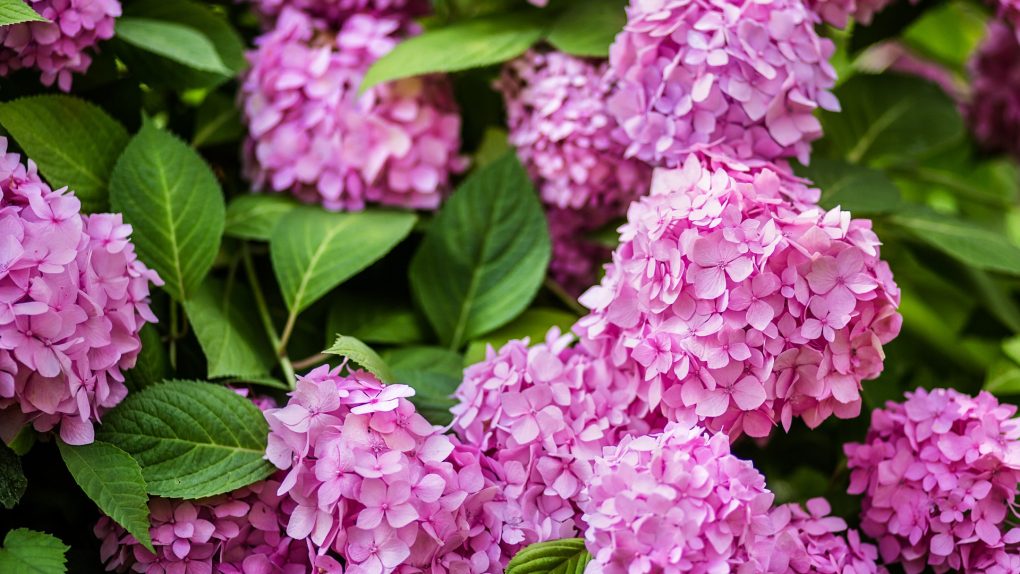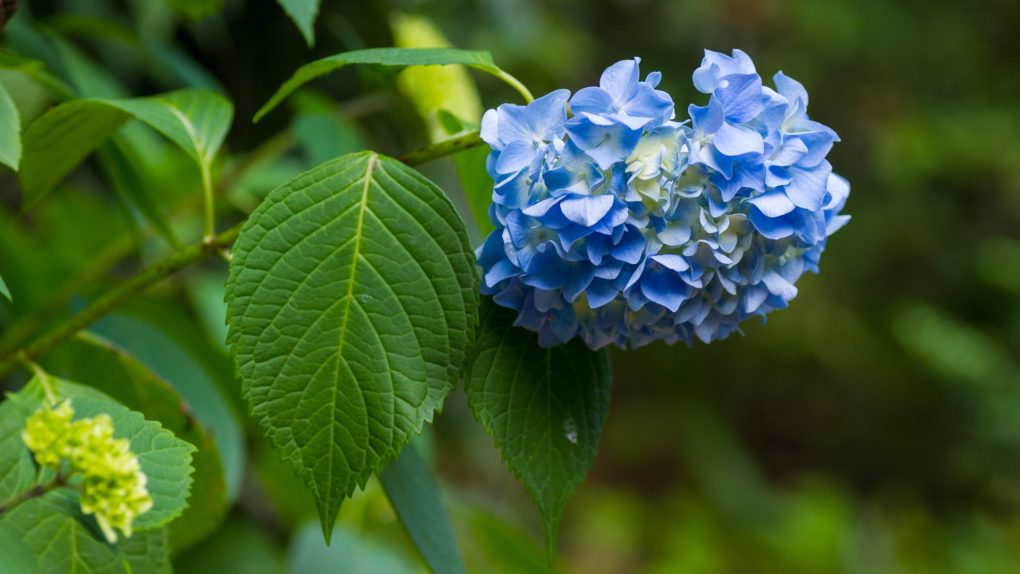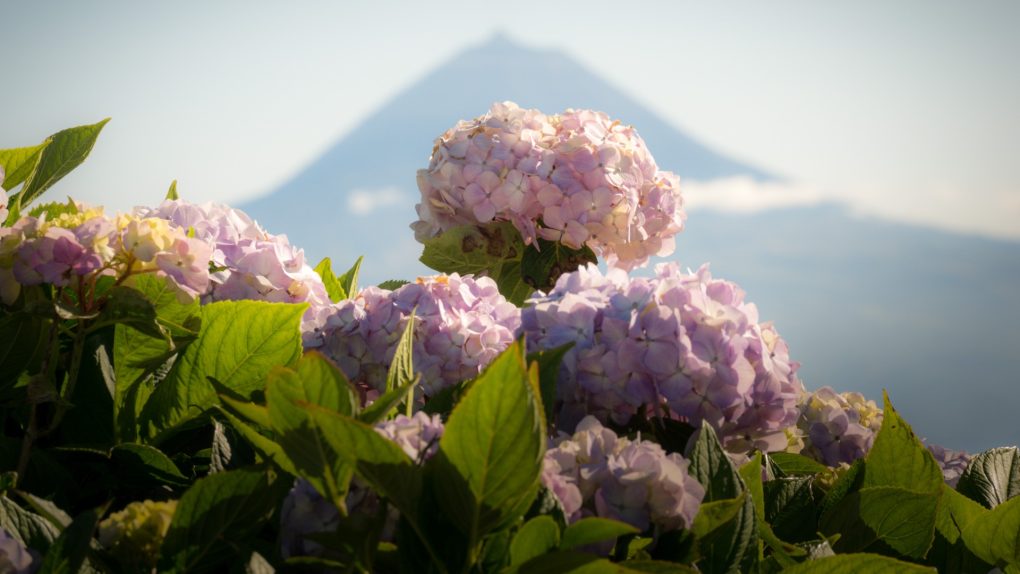What is Hydrangea Macrophylla? A Quick Overview
Hydrangea macrophylla is a type of hydrangea that is native to Japan. It is also known as the bigleaf hydrangea or the French hydrangea. This species is popular for its large, showy flowers ranging from pink to blue to purple, depending on the soil’s acidity.

The bigleaf hydrangea is a deciduous shrub that can grow up to 6 feet tall and wide. It has large, dark green leaves and produces large, rounded flower clusters up to a foot in diameter. There are two main types of bigleaf hydrangeas: the mophead hydrangeas, which have large, ball-shaped flower clusters, and the lacecap hydrangeas, which have a flat cluster of small flowers surrounding a circle of larger flowers.
Hydrangea macrophylla is a relatively easy plant to grow and care for, making it a popular choice for home gardeners. It prefers moist, well-drained soil and partial shade. Before new growth, pruning should be done in late winter or early spring. With proper care, the bigleaf hydrangea can provide years of beautiful blooms in your garden.
Table of Contents
Overview of Hydrangea Macrophylla
Hydrangea macrophylla, also known as bigleaf hydrangea or French hydrangea, is a deciduous shrub that is native to Japan. It is a popular garden choice due to its large, showy blooms in various colors, including pink, blue, purple, and white.
The species is divided into the Mophead Hydrangeas and the Lacecap Hydrangeas. The Mophead Hydrangeas have large, round flower clusters, while the Lacecap Hydrangeas have clusters of small flowers surrounded by more prominent blooms.
Hydrangea macrophylla typically grows to be 3-6 feet tall and wide, but can grow larger under optimal conditions. It prefers partial shade and well-draining soil that is rich in organic matter. It is hardy in USDA zones 6-9.
Hydrangea macrophylla is a relatively low-maintenance plant that requires regular watering and fertilization to thrive. However, it is important to note that the color of the blooms can be influenced by soil acidity, with more acidic soil producing blue blooms and more alkaline soil producing pink blooms.
Physical Characteristics
Hydrangea macrophylla, commonly known as bigleaf hydrangea, is a deciduous shrub that can grow up to 6 feet tall and wide. It is known for its large, showy flowers available in variety of colors incudes blue, pink, white, and purple. The plant is native to Japan, China, and Korea and is widely grown in gardens and landscapes worldwide.
Leaves
The leaves of Hydrangea macrophylla are large, dark green, and shiny. They are typically 4-8 inches long and 2-6 inches wide and have a serrated edge. Leaves are arranged oppositely on the stem and are oval or elliptical.
Flowers
The flowers of Hydrangea macrophylla are the plant’s most recognizable feature. They are large, round, and showy, with a diameter of up to 12 inches. The flowers are the showy sterile flowers on the outer ring and the smaller fertile flowers in the center. The color of the flowers varies depending on the pH of the soil. In acidic soil, the flowers are blue, while in alkaline soil, they are pink. White flowers are produced in neutral soil.

Stems
The stems of Hydrangea macrophylla are woody and sturdy, usually brown or gray and have a rough texture. The plant produces new stems each year, which grow from the base of the plant. The stems are covered with leaves and flowers, giving the plant a full and bushy appearance.
Cultivation and Care
Hydrangea macrophylla is a beautiful shrub that requires minimal maintenance once established. Here are some tips for cultivating and caring for this plant:
Soil and Watering
Hydrangea macrophylla prefers well-draining soil that is rich in organic matter. Ensure that the soil is consistently moist, but not waterlogged. During the hot summer months, the plant may require more frequent watering. It is also recommended to apply mulch around the plant’s base to keep it moist.
Pruning
Pruning hydrangea macrophylla is unnecessary, but it can help maintain a more compact shape and encourage blooming. Pruning is best done in early spring or late winter when new growth first appears. Remove any dead or damaged branches that cross or rub against one another, as well as any dead or damaged wood. Remove about a third of the oldest wood each year to encourage larger blooms.

Fertilization
Hydrangea macrophylla does not require frequent fertilization but may benefit from an application of a slow-release fertilizer in the spring. Avoid using high-nitrogen fertilizers, as this might cause the plant to produce more leaves than flowers. Add lime to raise the pH and encourage pink blooms if the soil is particularly acidic. Add aluminum sulfate to the soil for blue blooms to lower the pH.
Common Varieties
Hydrangea macrophylla is a diverse species with many cultivars, each with unique characteristics. Here are some of the most popular varieties:
| Variety | Description |
| Endless Summer | A popular cultivar that blooms on both old and new wood, extending the flowering season. |
| Cityline | A series of compact hydrangeas that are perfect for small gardens or containers produce large mophead flowers in shades of pink, blue, and purple. |
| Teller Blue | A stunning blue hydrangea with large, mophead flowers, it is known for maintaining its blue color, even in acidic soil. |
| Nikko Blue | One of the most popular hydrangeas, Nikko Blue produces large, blue flowers, and prefers partial shade and acidic soil. |
| Twist-n-Shout | A lacecap hydrangea with unique, twisted petals, blooms on both old and new wood, extending the flowering season. |
These are just a few examples of the many cultivars of Hydrangea macrophylla available. Gardeners can choose various colors, sizes, and shapes to suit their needs and preferences.

Uses and Benefits
Hydrangea macrophylla is a popular ornamental plant due to its large and showy flowers, it also has medicinal properties that have been used for centuries.
Ornamental Purposes
Hydrangea macrophylla is commonly used in landscaping and gardening due to its beautiful and unique flowers. The plant produces large, round clusters of flowers ranging in color from pink, blue, purple, and white. The pH level of the soil can influence the color of the flowers. Acidic soil produces blue flowers, while alkaline soil produces pink flowers. The plant blooms from early summer to late fall, providing a long season of colorful flowers.
Hydrangea macrophylla can be grown as a shrub or trained to grow as a small tree. The plant prefers partial shade and moist, well-drained soil. The plant’s size and shape can be controlled by pruning in late winter or early spring.
Medicinal Properties
Hydrangea macrophylla has been used in traditional medicine to treat various ailments, particularly those related to the urinary system.
The plant’s root contains diuretic compounds, meaning they increase urine production. This can flush out the urinary system and potentially reduce symptoms of urinary tract infections and kidney stones. This potential benefit, however, needs to be confirmed by further research.
Hydrangea root can also be used as an anti-inflammatory and to relieve pain. It has been used to treat arthritis, rheumatism, and other inflammatory conditions, but these uses have yet to be extensively studied, and more research is needed to confirm their effectiveness.
It is important to note that while hydrangea root has been used in traditional medicine for centuries, it should not be used as a substitute for medical treatment. Therefore, anyone considering using hydrangea root for medicinal purposes should consult a healthcare professional first.
